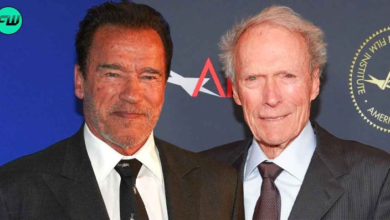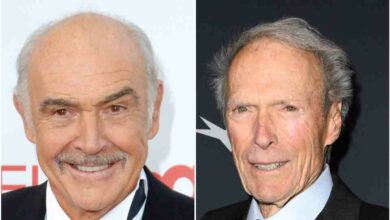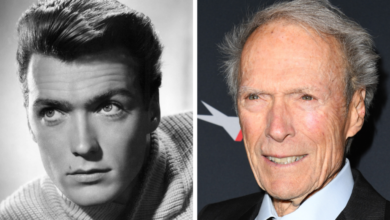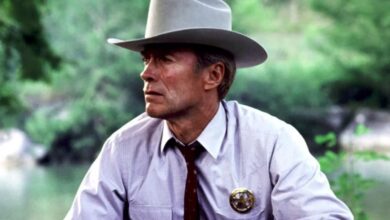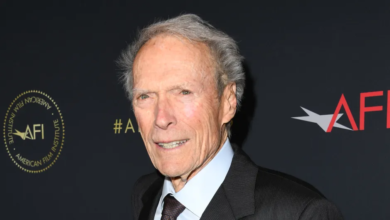How Bond Movies Would Be Different If Clint Eastwood Played 007
The Man With No Name almost became 007, which would have made for a very different James Bond in On Her Majesty's Secret Service.
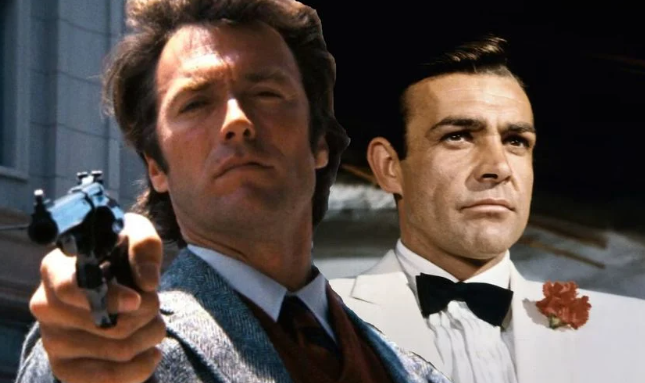
Clint Eastwood revealed that he was once offered the role of 007 in the James Bond movies but turned it down. Eastwood is best known for playing “Dirty” Harry Callahan across five movies, and as the Man with no Name in Sergio Leone’s Dollars trilogy. James Bond is just one of the many pop-culture figures offered to the actor during his career, including both Superman and Batman. Yet, considering his impressive CV, it’s the Bond connection that is probably the most intriguing.
Given Eastwood’s previous roles it would have been interesting to see how casting the actor would change James Bond. Created in 1953 by author and former British intelligence officer Ian Fleming, Bond first appeared in the novel Casino Royale. Since the publication of this debut novel, Fleming went on to write twelve further Bond novels and two short-story collections featuring the British spy with a license to kill. The novels and the character have been adapted into radio serials, a 1950s American TV movie, and a 26-strong feature film franchise, many of which seemingly lend themselves to Eastwood’s signature style.
Aside from Australian actor George Lazenby, the casting of James Bond has primarily favored actors from across the British Isles. Sean Connery was Scottish, Roger Moore was born in England, Timothy Dalton is Welsh, and Irish actor Pierce Brosnan preceded Daniel Craig, another Englishman. The character is therefore a British institution, and there’s often controversy whenever there’s a question of looking elsewhere for the next Bond actor. As an American, Clint Eastwood would have been a radical departure for the franchise. However, his unique screen persona would have, strangely, suited the character more than many previous role incumbents. His grit, charm, and natural swagger mean that, in an alternate universe, Eastwood may well have made a great Bond. Here’s how he could have transformed the role.
When Clint Eastwood Could’ve Played James Bond

During the making of his fifth James Bond movie, You Only Live Twice, Sean Connery had grown tired of the role. When he was denied a pay increase by producer Albert “Cubby” Brocolli, Connery declined to return for the next entry in the franchise. With Connery gone, EON Productions began casting for the next 007, a process that would eventually lead them to George Lazenby. It was during this casting process in the late-1960s that EON’s attention turned to American actors such as Burt Reynolds and Clint Eastwood. At this point, Eastwood was best known for his roles in Sergio Leone’s trilogy of Western movies.
Would Clint Eastwood Have Been A Good James Bond Actor?

James Bond is a privately educated Englishman, who had lived in Canterbury, England, and studied at Eton College, before transferring to Fettes in Edinburgh, Scotland. While a lack of an English accent was no issue for Edinburgh-born Sean Connery, whose iconic performance eventually influenced Fleming’s later novels, introducing Bond’s Scottish ancestors. Clint Eastwood’s western drawl isn’t an obvious fit for the character of Bond and feels more suitable for a grittier version of Bond’s CIA colleague Felix Leiter.
However, the role that Eastwood was best known for at this particular point in his career does suggest his ability to portray particular aspects of the character. Having lost his parents at a young age, Bond has abandonment issues, which lead to his inability to form lasting relationships. He’s a loner, much like Eastwood’s Man with no Name, who over the course of Leone’s trilogy retrieved buried gold, tracked down and eliminated the villainous El Indio, and brought peace to the town of San Miguel. Like Bond, he also cuts a recognizable silhouette – the poncho, brown hat, cigarillo, and marksmanship being a rough and ready frontier version of Bond’s tuxedo, Martini, cigarettes, and proficiency with a Walther PPK. It’s therefore easy to see how the Bond producers saw how Eastwood’s lone-wolf Western hero could be translated into Fleming’s iconic secret agent.
How Clint Eastwood’s James Bond Would Be Very Different

Daniel Craig’s portrayal of James Bond heightened the brutal nature of 007’s role as Her Majesty’s Government’s “blunt instrument.” In a post-9/11, post-Jason Bourne world, Craig’s take on the James Bond character was seen as a vital modernization of the character. Daniel Craig’s 007 recalled Timothy Dalton, who also gravitated toward Bond’s darker side in his portrayal of the character. If Eastwood had been cast in the late 1960s, then this darker, more brutal version of the character would have debuted much earlier. Clint Eastwood’s first Bond movie would have been On Her Majesty’s Secret Service, which features a plot that involves ski chases, hypnotism, and various women throwing themselves at Bond. It’s hard to see quite how Eastwood’s stoic cowboy persona would have fit into the movie.
However, the moment at the start when Bond saves Tracy from drowning after she attempts to take her own life would take on greater, grittier urgency with Eastwood in the role. It would also hint at the dark tone of the movie’s closing moments when Bond’s new wife Tracy is gunned down by Blofeld and Irma Bunt on the Bonds’ wedding day. Clint Eastwood’s James Bond would have brought a darker, brooding intensity to the movie’s heartbreaking conclusion. Where Lazenby plays Tracy’s murder with a shocked detachment, Eastwood would be hinting at the violent reprisals to come when “James Bond will return…” in the next movie. Like Craig, Eastwood’s Bond would likely have more of a narrative throughline, which would have fundamentally changed the seventh Bond movie Diamonds Are Forever.
What Eastwood’s 007 Would’ve Meant For Future James Bond Movies

When George Lazenby departed after only one outing as 007 out of fear of type-casting, Sean Connery returned to the role once more for Diamonds Are Forever. This shift in casting is why Bond’s revenge against Blofeld and Bunt is hastily abandoned after a bizarre pre-titles sequence that sees Bond “kill” Blofeld. Tracy’s death is not mentioned explicitly, and Bunt never appears again, due to the studio moving in a different direction once Connery returned. Had Eastwood been cast in On Her Majesty’s Secret Service and accepted the contract that Lazenby declined, it’s likely that Bond’s revenge mission would have been a far more substantial part of Diamonds Are Forever.
The continuity in actors would have allowed for a more emotionally satisfying continuation of Bond’s story than the one in Connery’s final Bond movie. Aside from the opening up of Bond’s casting to the world outside the UK, Eastwood’s casting would have changed the trajectory of the 007 movies going forward. Prior to On Her Majesty’s Secret Service, the Bond movies had generally been standalone adventures with recurring elements, the only throughline being 007’s continued clashes with SPECTRE. The character of Bond didn’t change, he was never visibly affected by the emotional or physical toll of his missions, barring a visit to a spa at the opening of Thunderball. Eastwood’s casting would have changed this, and having this grizzled actor play a more stoic and vengeful Bond would have seamlessly shepherded the James Bond franchise into the murkier morality of the 1970s and New Hollywood.
Why Clint Eastwood Turned Down James Bond

Talking about the offer of James Bond, Eastwood said that the studio was keen to have him and he was offered a considerable amount of money to play the part. However, the actor felt uncomfortable about donning Sean Connery’s tuxedo and passed up the opportunity. He explained that he thought it was a role that, after five movies, belonged to Sean Connery and that it wasn’t right for Eastwood to take it on.
Without Clint Eastwood as James Bond in On Her Majesty’s Secret Service, the 1970s saw the franchise go in a different direction. Rather than deal in complex anti-heroes like those played by Eastwood, Roger Moore’s Bond movies instead cashed in on other 1970s cinematic trends like Blaxploitation in Live and Let Die and Star Wars in Moonraker. Roger Moore was Connery’s eventual successor, playing Bond for seven films over 12 years, lasting far longer than George Lazenby and even Sean Connery himself. Today, many of these movies are celebrated parts of James Bond lore. However, there’s no doubt that the series could have taken a radically different direction with Clint Eastwood involved.

